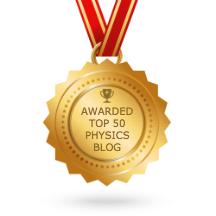 |
| “The Magnetic Field of a Single Axon: A Comparison of Theory and Experiment.” |
Forty years ago this month, I published one of my first scientific papers. “The Magnetic Field of a Single Axon: A Comparison of Theory and Experiment” appeared in the July, 1985 issue of the Biophysical Journal (Volume 48, Pages 93–109). I was a graduate student at Vanderbilt University at the time, and my coauthor was my PhD advisor John Wikswo. When discussing the paper below, I will write “I did this…” and “I thought that…” because I was the one in the lab doing the experiments, but of course it was really Wikswo and I together writing the paper and analyzing the results.
 |
| Selected Papers of Great American Physicists. |
If you are reading this blog, you’re probably are familiar with Millikan’s oil drop experiment. He measured the speed of small droplets of oil suspended in air and placed in gravitational and electric fields, and was able to determine the charge of a single electron. I remember doing this experiment as a undergraduate physics major at the University of Kansas. I was particularly impressed by the way Millikan analyzed his experiment for possible systematic errors: He worried about deviations of the frictional force experienced by the drops from Stokes’ law and corrected for it; he analyzed the possible changes to the density of the oil in small drops; he checked that his 5300 volt battery was calibrated correctly and supplied a constant voltage; and he fussed about convection currents in the air influencing his results. He was especially concerned about his value of the viscosity of air, which he estimated was known to about one part in a thousand. Rooting out systematic errors is a hallmark of a good experimentalist. I wanted to be like Millikan, so I analyzed my magnetic field measurement for a variety of systematic errors.
The first type of error in my experiment was in the parameters used to calculate the magnetic field (so I could compare it to the measured field). I estimated that my largest source of error was in my measurement of the axon radius. This was done using a reticle in the dissecting microscope eyepiece. I only knew the radius to 10% accuracy, in part because I could see that it was not altogether uniform along the axon, and because I could not be sure the axon’s cross section was circular. It was my biggest source of error for calculating the magnitude of the magnetic field, because the field varied as the axon cross-sectional area, which is proportional to the radius squared.
 |
| Figure 1 from "The Magnetic Field of a Single Axon." |
I measured the magnetic field by threading the axon through a wire-wound ferrite-core toroid (I’ve written about these toroid measurements before in this blog). I assumed the axon was at the center of the toroid, but this was not always the case. I performed calculations assuming the toroid averaged the magnetic field for an off-axis axon, and was able to set an upper limit on this error of about 2%. The magnetic field was not measured at a point but was averaged over the cross-sectional area of the ferrite core. More numerical analysis suggested that I could account for the core area to within about 1%. I was able to show that inductive effects from the toroid were utterly negligible. Finally, I assumed the high permeability ferrite did not affect the magnetic field distribution. This should be true if the axon is concentric with the toroid and aligned properly. I didn’t have a good way to estimate the size of this error.
 |
| Figure 2 from "The Magnetic Field of a Single Axon." |
 |
| Figure 3 of "The Magnetic Field of a Single Axon." |
All of this analysis of systematic errors, and more, went into our rather long Biophysical Journal paper. It remains one of my favorite publications. I hope Millikan would have been proud. If you want to learn more, see Chapter 8 about Biomagnetism in Intermediate Physics for Medicine and Biology.
Forty years is a long time, but to this old man it seems like just yesterday.



No comments:
Post a Comment